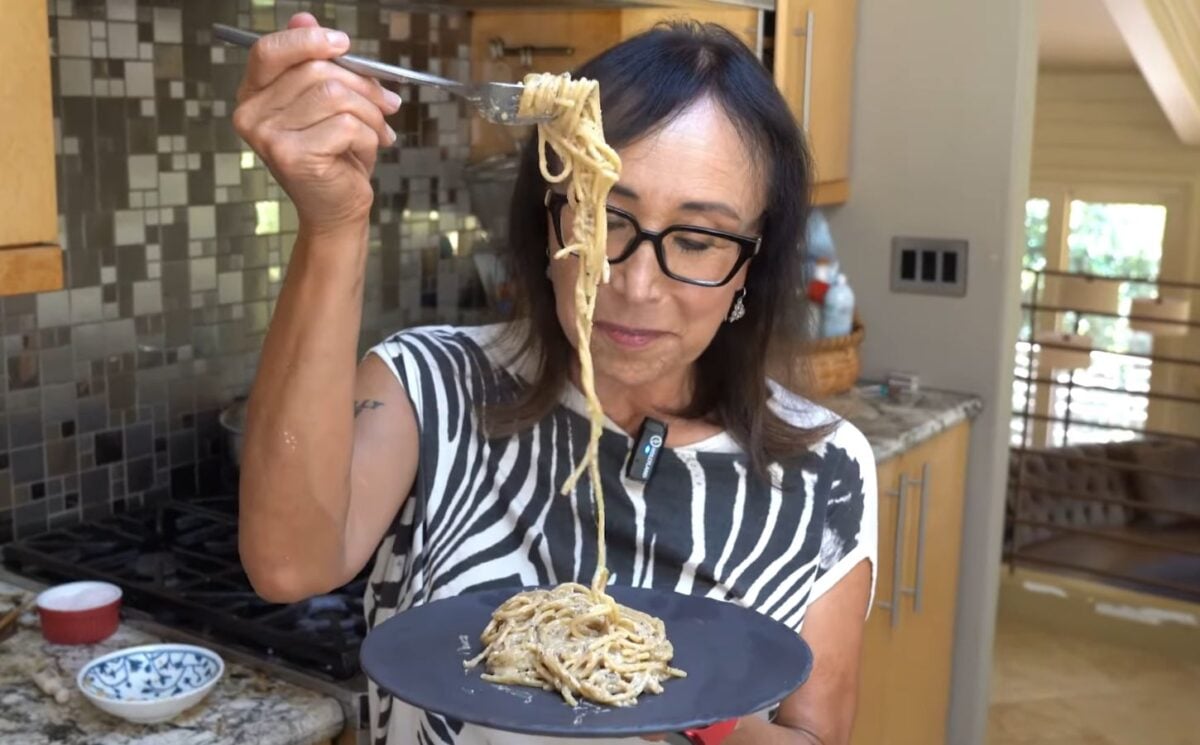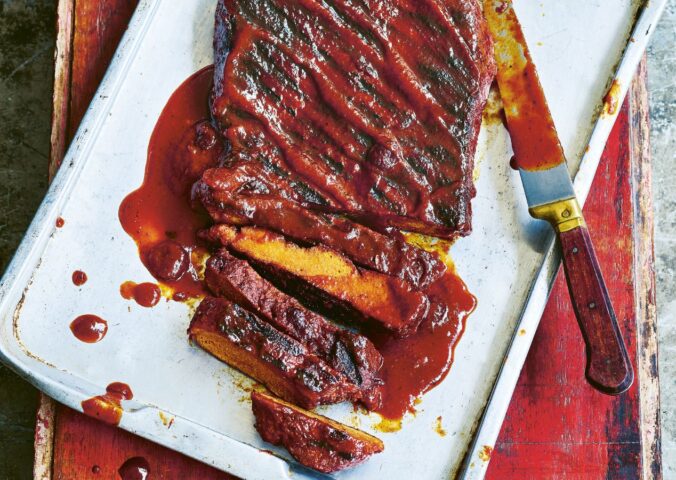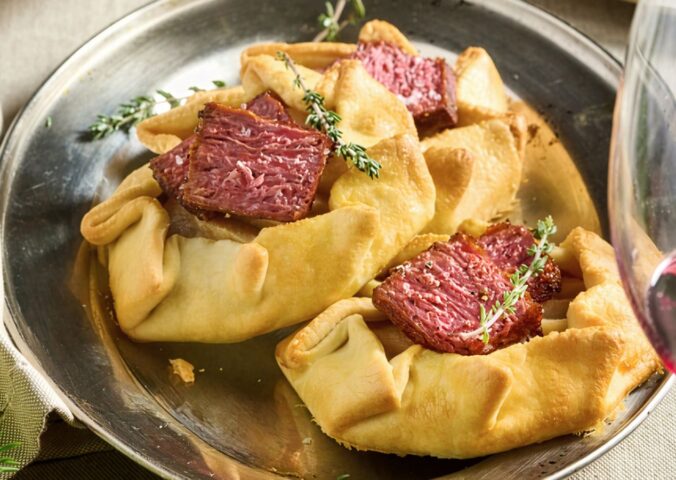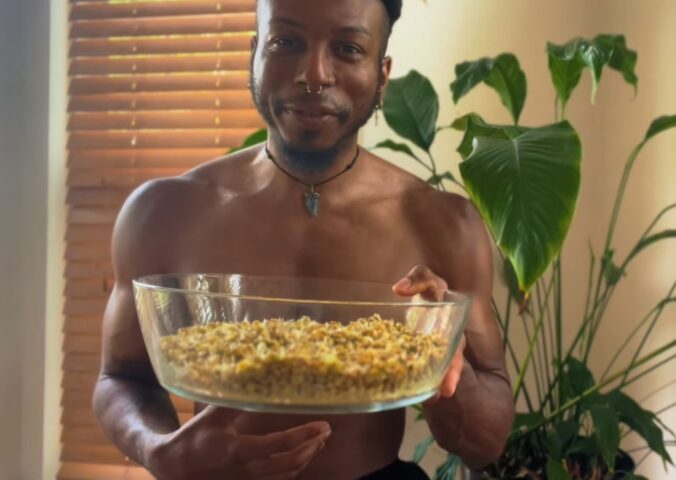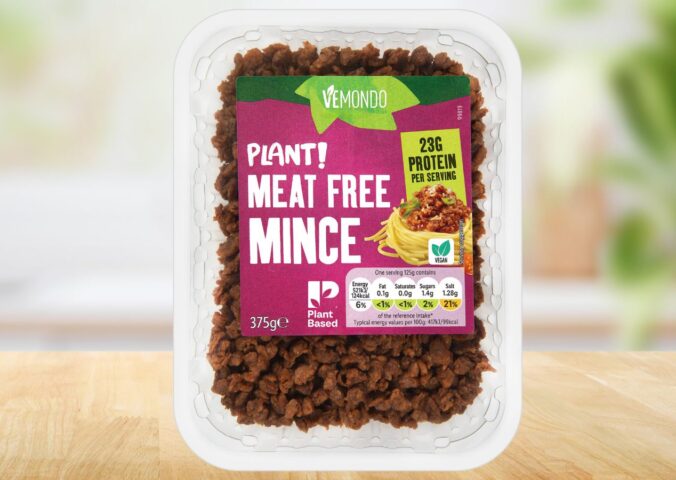There’s comfort food, and then there’s Roman comfort food – simple, peppery, rich, and timeless. In a new video on The Vegan Good Life with Miyoko, dairy-free cheese pioneer Miyoko Schinner unveils her take on cacio e pepe, the iconic Italian dish made traditionally with only two main ingredients: cheese and black pepper.
“It’s basically an adult version of mac and cheese, Roman style,” Schinner says as she digs into a plate of creamy spaghetti. “It’s peppery, it’s got bite, it’s got sharpness, it’s got soul.”
Read more: Charcoal Spaghetti Carbonara With Vegan Egg Yolk
Schinner, the founder of Miyoko’s Creamery and longtime innovator in vegan cheese-making, walks viewers through a dairy-free version of cacio e pepe that holds onto its authenticity – right down to the rich sauce that clings to each noodle. She explains that the magic comes from a balance of aged vegan cheese and freshly crushed black pepper, brought together with starchy pasta water.
The only two ingredients that matter
Flavor in this dish comes almost entirely from two ingredients: cheese and black pepper. “You’re going to add about two tablespoons of peppercorns,” Schinner explains, noting that they should be hand-crushed rather than pre-ground. “You want these little chunks of pepper. You don’t want the whole peppercorns but you do want them crushed.”
If you don’t have a mortar and pestle, she suggests using a heavy wine bottle – something she did herself while cooking in Italy. “You can just use a wine bottle, a heavy wine bottle, and crush it like that. You can hear it, can’t you?”
On the cheese side, Schinner recommends using a hard, aged vegan cheese with sharpness and bite. “These are cheeses that I made,” she says, referencing recipes from her book The Vegan Creamery. But she also encourages viewers to support artisan vegan cheesemakers, whether local or online. “There are so many amazing artisan vegan cheese makers,” she adds.
You’ll need about six ounces total, or two to three ounces per serving.
How to bring it all together
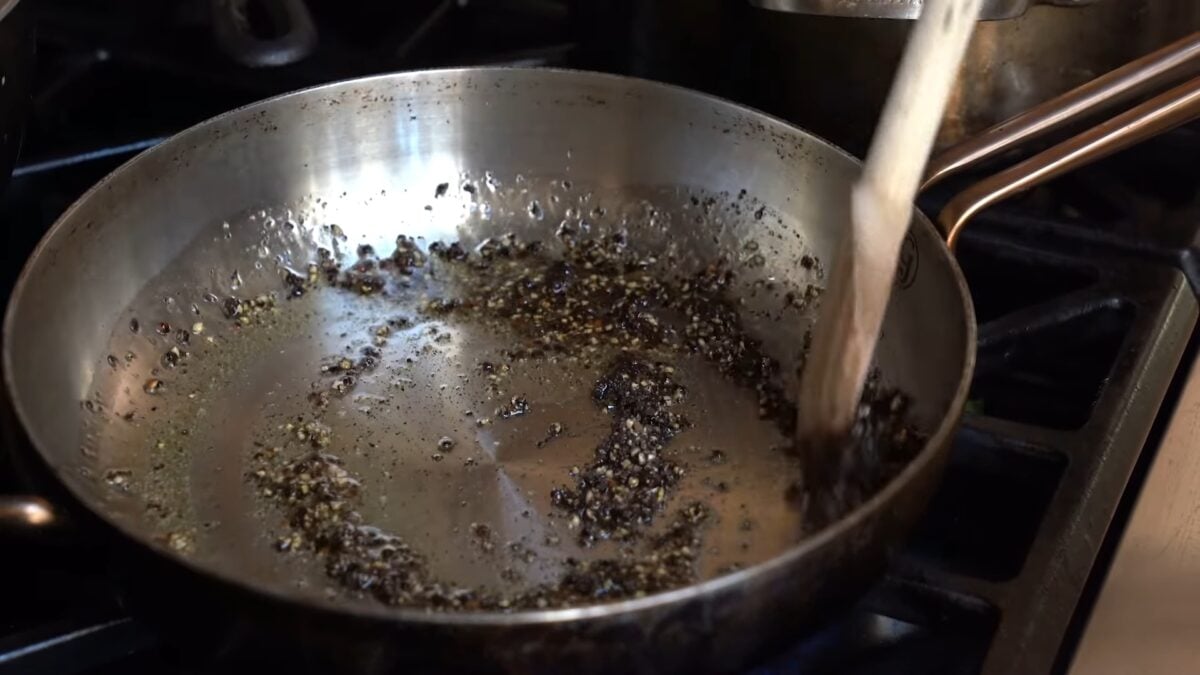
Once you’ve crushed your pepper and grated your cheese, it’s time to cook the pasta. Schinner boils the spaghetti in salted water, but crucially doesn’t drain it. Instead, she transfers the pasta directly from the pot to a hot pan where the sauce is built.
She starts by heating a few tablespoons of olive oil and cooking the pepper for about a minute. “Just let that sizzle for 30 seconds or so,” she says. This helps the spice bloom and fill the kitchen with aroma.
Next, she adds the semi-cooked pasta into the pan. “We want that pasta water to turn the cheese into a sauce,” she explains. After tossing in the grated cheese, she ladles in some of the starchy water. “It’s got salt in it, so you probably won’t have to add any.”
As the cheese melts and emulsifies with the pepper and pasta water, a creamy sauce forms. “Can you see that sauce beginning to enrobe each pasta noodle?” Schinner asks. “Look at that.”
She reminds viewers to serve the dish hot, since the cheese can start to solidify quickly. You can adjust the texture by adding more pasta water if needed.
The taste of Rome, sans dairy
As she plates the final dish, Schinner reflects on the elegance of this centuries-old recipe. “I don’t know how the Italians do it,” she says. “They put together two simple ingredients and just elevate them and turn them into something completely different…This is so soul-satisfying, so exciting!”
With just black pepper and vegan cheese, this grown-up mac and cheese proves that plant-based cooking doesn’t need dozens of ingredients to shine. It just needs the right ones.
Read more: 11 Vegan Italian Recipes
